Recipe Cocktail
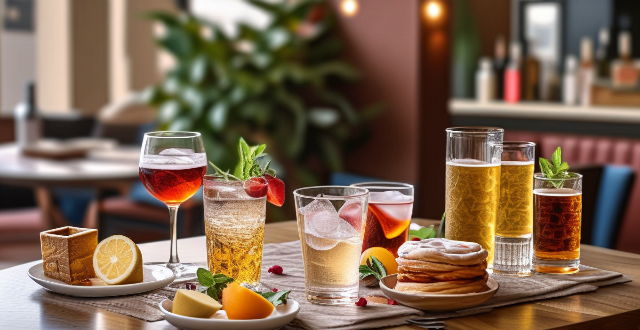
How do I create a signature cocktail for my bar or restaurant ?
How to create a signature cocktail for your bar or restaurant, including determining target audience, analyzing competition, choosing a theme, selecting quality ingredients, experimenting with flavors, perfecting the recipe, naming the cocktail, training staff, marketing the cocktail, and evaluating and adjusting based on sales data and customer feedback.

How can I use bitters to enhance my cocktail recipes ?
Bitters are a crucial ingredient in many cocktails, adding depth and complexity to the flavors. Here's how you can use them to enhance your cocktail recipes: Understanding Bitters: Bitters are concentrated alcoholic extracts made from herbs, spices, fruits, and other botanicals. They are typically used in small amounts to add a subtle, aromatic flavor to cocktails. There are several types of bitters available, each with its own unique flavor profile. Using Bitters in Cocktails: Here are some tips for using bitters in your cocktail recipes: start small, experiment with flavor combinations, use as a garnish, and create your own bitters. Overall, using bitters is an easy way to elevate your cocktail game and create unique, complex flavors that will impress your guests.

How do professional bartenders measure ingredients for consistency ?
Professional bartenders use a variety of tools and techniques to measure ingredients consistently. Accuracy is crucial for maintaining the same flavor profile and balancing different tastes in cocktails. Efficiency is also important, as it speeds up drink-making and allows bartenders to focus on customer interaction. Jiggers are commonly used tools for measuring both large and small quantities of liquids. Measuring spoons are used for smaller amounts like bitters or syrup. Digital scales are used for precise measurements by weight, especially for ingredients like fruit juices or syrups. Pour spouts and containers help control the flow of liquids to reduce spillage and waste. Standardization processes such as recipe cards, batching, and taste testing are also essential. Recipe cards include detailed measurements for each ingredient, helping new bartenders learn quickly and maintain consistency. Batching involves pre-mixing a large volume of a single cocktail ingredient or an entire recipe, saving time during busy shifts and ensuring uniformity. Taste tests are crucial even with precise measurements, as bartenders adjust recipes based on customer feedback and ingredient freshness. In conclusion, professional bartenders rely on a combination of tools, techniques, and standardized processes to measure ingredients consistently. This ensures that they can replicate the perfect cocktail every time, providing a high-quality experience for their customers.

What are the key differences between classic and modern cocktail styles ?
Cocktail styles have evolved over time, with classic cocktails representing traditional recipes and techniques, while modern cocktails often showcase innovative ingredients and presentation methods. Classic cocktails are known for their simplicity, limited ingredient list, standard measurements, traditional garnishes, and historical significance. Examples include the Martini, Old Fashioned, and Daiquiri. Modern cocktails, on the other hand, feature innovation, complexity, craft methods, visual appeal, and locally sourced ingredients. Examples include the Earl Grey MarTEAni, Smoked Old Fashioned, and Lavender Lemon Drop. In summary, classic cocktails pay homage to the roots of mixology, while modern cocktails celebrate creativity and the ongoing evolution of the craft. Both styles offer a unique drinking experience and cater to different preferences among cocktail enthusiasts.

What are some tips for balancing sweet and sour flavors in cocktails ?
"Balancing Sweet and Sour Flavors in Cocktails: Tips and Tricks for Crafting Perfect Drinks"
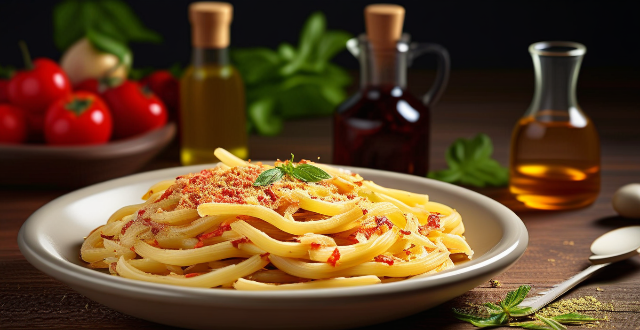
Can you suggest a quick and easy pasta recipe for busy weeknights ?
This quick and easy pasta recipe is perfect for busy weeknights. It requires minimal ingredients like spaghetti pasta, tomato sauce, onion, garlic, olive oil, salt, pepper, and optional grated Parmesan cheese. The steps involve cooking the pasta, sautéing onions and garlic, adding tomato sauce, mixing the pasta with the sauce, and serving with optional Parmesan cheese. This recipe can be customized with add-ins like vegetables, meatballs, or chicken.

How do I master the art of shaken versus stirred cocktails ?
Mastering the Art of Shaken versus Stirred Cocktails Understanding the Differences: - Shaken cocktails are typically frothier, due to aeration and dilution from ice. - Stirred cocktails preserve clarity and strength, ideal for spirit-forward drinks. Choosing the Right Tools: - Cocktail shakers (Boston or cobbler), jigger, bar spoon, and Hawthorne strainer are essential. Perfecting Your Technique: Shaking involves measuring ingredients, adding ice, shaking vigorously, and straining. Stirring involves similar steps but with gentle stirring in a mixing glass and using a julep strainer. Practical Tips: - Consider desired dilution and temperature when choosing preparation method. - Experimentation through taste testing and recipe adjustment is key to finding preferences.

How do I pair cocktails with food for optimal taste experiences ?
Pairing cocktails with food can elevate your dining experience to a whole new level. Here are some tips on how to do it right: 1. Consider the flavor profile of your food. For bold and spicy dishes, you might want to consider cocktails that can stand up to the strong flavors, such as Margarita or Mojito. For lighter dishes, opt for a cocktail that won't overpower the subtleties of the food, like Champagne Cocktail or Whiskey Sour. 2. Match intensity. If you're having light bites or snacks, opt for lower-alcohol cocktails that won't weigh you down, such as Sherry Cobbler or Gin Fizz. For more substantial meals, you might want something with a bit more oomph, like Old Fashioned or Negroni. 3. Think about sweetness. For dessert courses, you'll want a cocktail that can match the sweetness, such as Pina Colada or White Russian. For savory dishes, avoid overly sweet cocktails that might clash, like Daiquiri or Cosmopolitan. 4. Don't forget about acidity. For dishes with a lot of acidity, like lemon-based sauces or vinegar dressings, you might want a cocktail that can stand up to it, such as Woo Woo or Kir Royale. For rich, creamy dishes, a touch of acidity in your cocktail can help cut through the heaviness, like Martini or Bramble. 5. Experiment and have fun! The most important thing is to find what you enjoy. There are no hard-and-fast rules, so don't be afraid to try something new. The best pairing is the one that brings you the most pleasure!

What are some unique and delicious New Year's Eve snacks ?
New Year's Eve is a time for celebration and indulgence, and what better way to celebrate than with some unique and delicious snacks? Here are five ideas to get you started: 1. Fruit and Cheese Platter - Fresh fruits such as grapes, apples, and pears, assorted cheeses like Brie, Cheddar, and Gouda, crackers or bread for pairing. 2. Baked Brie En Croute - Wheel of Brie cheese, puff pastry sheet, egg wash (egg beaten with a bit of water), jam or preserves (optional). 3. Charcuterie Board - Assorted cured meats like salami, prosciutto, and chorizo, assorted olives and pickled vegetables, crackers or bread for pairing, mustard, hummus or other dips. 4. Shrimp Cocktail - Cooked shrimp, peeled and deveined, cocktail sauce or homemade dipping sauce, lemon wedges for garnish. 5. Chocolate Fondues - Assorted chocolate bars (milk, dark, white), assorted dippers like strawberries, marshmallows, and pretzels.

How can I improve my pie crust recipe ?
To improve your pie crust recipe, focus on using high-quality ingredients like all-purpose flour and unsalted butter. When mixing the dough, combine dry ingredients first, then cut in cold butter until it resembles coarse crumbs. Gradually add ice-cold water and gently knead the dough until it forms a cohesive ball. Avoid overworking the dough to prevent toughness. For rolling out the dough, chill it first to firm up the butter and prevent shrinkage. Roll out the dough on a lightly floured surface to an even thickness of about 1/8 inch. Carefully transfer the rolled-out dough to your pie plate, trim excess, and crimp the edges as desired. Blind bake single crust pies by pre-baking with pie weights or dried beans for 15-20 minutes at 375°F before adding the filling. For double crust pies, brush the top crust with an egg wash for shine and seal cracks or gaps. Cut small slits in the top crust to vent steam during baking. Bake at the specified temperature (usually between 350°F and 375°F) and check for doneness by inserting a knife into the center of the filling; if it comes out clean, the pie is ready. Allow it to cool completely before slicing to avoid a runny filling.

What are some tips for beginners in baking ?
Baking is a rewarding hobby that can bring joy and delicious treats to your life. Here are some tips to help beginners get started: 1. Read the recipe thoroughly before starting. 2. Use the right ingredients, fresh and as specified in the recipe. 3. Prep your ingredients beforehand. 4. Follow the recipe steps carefully. 5. Practice patience during the baking process. 6. Learn from your mistakes and keep practicing.

What's the secret to creating the perfect martini ?
The Secret to Creating the Perfect Martini is an art form that requires attention to detail, quality ingredients, and a touch of personal preference. Key elements to consider when making this iconic cocktail include high-quality gin or vodka, dry vermouth, ice cold water, and a garnish (traditionally a lemon twist or olives). Tools needed are a cocktail shaker or mixing glass, strainer, jigger for measuring, and chilled martini glass. Steps to make the perfect martini include measuring your ingredients, chilling your glassware, deciding whether to stir or shake the mixture, adding a splash of ice-cold water after stirring or shaking, straining and garnishing, and serving immediately. Personal touches such as experimenting with different types of gin or vodka, vermouth, and garnishes can add an exciting twist. By following these steps and paying attention to the details, you can create a martini that is perfectly tailored to your taste.
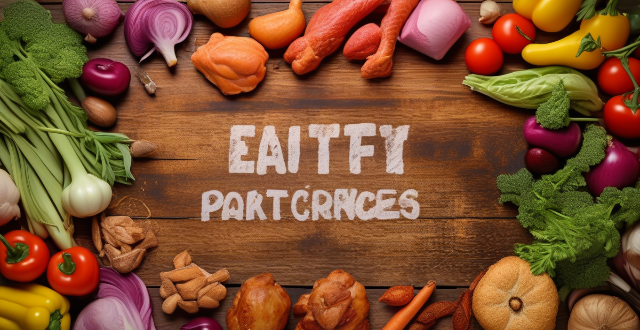
Can you suggest any easy-to-make lunch box recipes ?
The text provides a list of easy-to-make lunch box recipes. The first recipe is for grilled chicken and vegetable skewers, which involves marinating chicken breasts in a favorite sauce, cutting vegetables into large chunks, threading them onto skewers, and grilling until cooked through. The second recipe is for hummus and veggie wrap, which involves spreading hummus on a whole wheat tortilla, adding sliced cucumbers, carrots, and bell peppers, rolling up tightly, and slicing in half. The third recipe is for tuna salad lettuce wraps, which involves mixing canned tuna with mayo, lemon juice, and chopped celery, spooning the mixture onto lettuce leaves, and rolling up. The fourth recipe is for quinoa salad, which involves cooking quinoa according to package instructions, tossing with chopped tomatoes, cucumbers, feta cheese, and a simple vinaigrette, and packing in a container with pita chips or crackers. The fifth recipe is for egg salad sandwich, which involves hard boiling eggs, chopping them up, mixing with mayo, mustard, salt, and pepper, and serving on whole grain bread with lettuce and tomato. The sixth recipe is for Caprese salad, which involves slicing fresh mozzarella and tomatoes, drizzling with olive oil and balsamic vinegar, adding fresh basil leaves, and seasoning with salt and pepper. The seventh recipe is for turkey and cheese roll-ups, which involves laying out slices of turkey and cheese on a slice of bread, rolling up tightly, and slicing into bite-sized pieces. The eighth recipe is for Greek yogurt parfait, which involves layering Greek yogurt, granola, and fresh fruit in a jar or container, and topping with honey or maple syrup if desired. The ninth recipe is for black bean and corn salad, which involves rinsing and draining a can of black beans, mixing with canned corn, diced red onion, cherry tomatoes, and a lime vinaigrette, and serving chilled with tortilla chips or crackers. The tenth recipe is for avocado toast, which involves mashing an avocado with lime juice and salt, spreading on toasted whole grain bread, and topping with everything bagel seasoning or red pepper flakes for extra flavor.
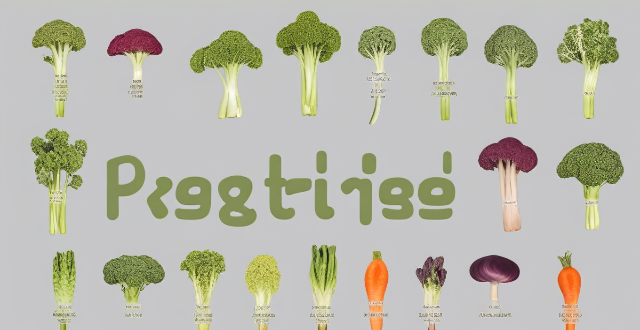
What are some vegetarian recipes that are also gluten-free ?
This text provides three vegetarian and gluten-free recipes that are both nutritious and delicious. The first recipe is for lentil soup, which is a hearty and filling meal. The second recipe is for quinoa salad, which is a great source of protein and makes an excellent base for a salad. The third recipe is for zucchini noodles with pesto sauce, which is a fantastic gluten-free alternative to traditional pasta. These recipes showcase the diversity of flavors and textures that can be achieved on a vegetarian and gluten-free diet.
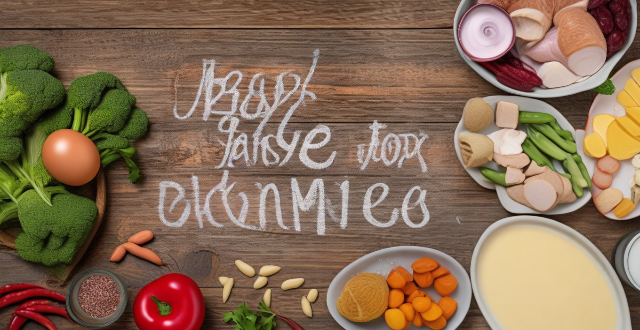
What are some easy and delicious recipes for a family dinner ?
The text provides three easy and delicious recipes for a family dinner: Spaghetti Carbonara, Chicken Stir Fry, and Baked Salmon with Lemon and Herbs. Each recipe includes a list of ingredients and step-by-step instructions for preparation and cooking. The Spaghetti Carbonara recipe involves cooking spaghetti and bacon, making a sauce with heavy cream and Parmesan cheese, and serving it hot with crumbled bacon on top. The Chicken Stir Fry recipe requires stir frying chicken strips, vegetables, and seasonings in a wok or skillet and serving it hot with rice or noodles. The Baked Salmon with Lemon and Herbs recipe involves baking salmon fillets with lemon slices and herbs until cooked through and flaky.

What are some healthy and low-calorie recipes for weight loss ?
Weight loss is a common goal for many people, but it can be difficult to find healthy and low-calorie recipes that taste good. Here are some healthy and low-calorie recipes that you can try: 1. Roasted Brussels Sprouts with Garlic and Parmesan Cheese: This recipe involves trimming and halving 2 cups of Brussels sprouts, mincing 3 cloves of garlic, and combining them with olive oil, salt, pepper, and grated Parmesan cheese before roasting in the oven. 2. Baked Salmon with Lemon and Dill Sauce: This recipe involves placing skinless salmon fillets on a baking sheet and whisking together lemon juice, dill weed, salt, pepper, olive oil, white wine vinegar, honey, and water before pouring over the fish and baking in the oven. 3. Zucchini Noodles with Pesto Sauce: This recipe involves spiralizing or cutting zucchini into noodles using a spiralizer, cooking them in olive oil until softened, adding pesto sauce, salt, pepper, chopped parsley leaves, and freshly grated Parmesan cheese if desired before serving warm.

What are some essential bartending skills for making great cocktails ?
Bartending involves a blend of technical skills, creativity, and customer service. Essential abilities include knowledge of spirits, mixology techniques, glassware selection, speed & efficiency, customer service, creativity & innovation, hygiene & safety, and teamwork. Mastering these skills elevates bartenders' performance, resulting in fantastic cocktails and an enhanced experience for guests.

Can you recommend any tasty and healthy low-calorie soup recipes for lunch ?
Here is a topic summary for the text: The text recommends three tasty and healthy low-calorie soup recipes for lunch. The first recipe is Tomato Basil Soup, which is low in calories and packed with vitamins and antioxidants. The second recipe is Carrot Ginger Soup, which is healthy and comforting with a sweet and spicy flavor. The third recipe is Broccoli Cheddar Soup, which is a bit higher in calories but still a healthy and delicious option with a rich and flavorful taste. All three recipes are easy to make and can be enjoyed as a satisfying and nutritious lunch option.
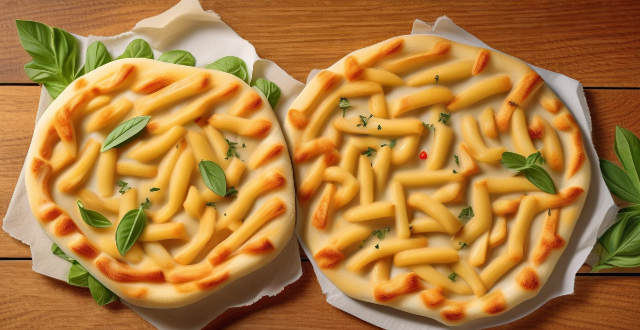
What are the best Italian pasta recipes for beginners ?
The provided text offers two Italian pasta recipes suitable for beginners: Spaghetti Carbonara and Penne all'Arrabbiata. The first recipe includes ingredients like spaghetti, bacon, garlic, Parmesan cheese, and egg yolks, and involves cooking the spaghetti, making a bacon-garlic mixture, and combining everything with a cheese-egg yolk mixture. The second recipe calls for penne pasta, olive oil, garlic, red pepper flakes, crushed tomatoes, salt, pepper, and basil leaves, and consists of cooking the penne, preparing a spicy tomato sauce, and combining them. Both dishes are described as easy to prepare and full of flavor.

Can you suggest some festive recipes for Christmas dinner ?
The text provides various festive recipes for Christmas dinner, including main courses such as roasted turkey and honey-glazed ham, side dishes like garlic mashed potatoes and green bean casserole, and desserts including pumpkin pie and gingerbread cake. Each recipe is accompanied by a list of ingredients and step-by-step instructions for preparation.
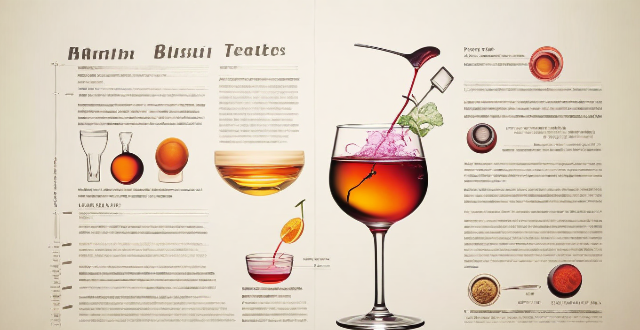
How can I improve my mixology techniques at home ?
该文介绍了如何在家提升调酒技巧,包括准备高质量工具和食材、学习基本技巧、实践经典鸡尾酒、尝试新口味等。通过这些步骤,可以提升调酒技能并享受过程。

Can you teach me how to layer different liquors in a drink ?
Layering liquors in a drink is a fun and visually appealing way to create a cocktail. Here's a step-by-step guide on how to do it: Materials Needed: - Clear glass or jar - Spoon - Different liquors of varying densities Steps: 1. Choose your liquors: Select three or more liquors that have different densities. The general rule is that the heavier liquid goes at the bottom and the lighter one on top. 2. Chill your liquors: Chill your liquors before starting. This will help them mix less when pouring. 3. Pour the first liquor: Pour the heaviest liquor into the glass first. Tilt the glass slightly and slowly pour the liquor down the side of the glass. 4. Use a bar spoon: Use the spoon to gently place it at the surface level of the first liquor. Gently pour the second liquor over the rounded part of the spoon. 5. Repeat with other liquors: Repeat the process with the other liquors, making sure to always pour over the spoon and down the side of the glass. 6. Enjoy your layered drink: Once all layers are added, enjoy your visually appealing cocktail!

What should I wear to a movie premiere ?
Attending a movie premiere requires dressing up in chic, elegant attire. Men should wear a tuxedo or suit, while women opt for evening gowns or cocktail dresses. Consider rich jewel tones and classic black and white combinations. Ensure comfort and fit, prepare for the weather, and add personal style elements to stand out on the red carpet.
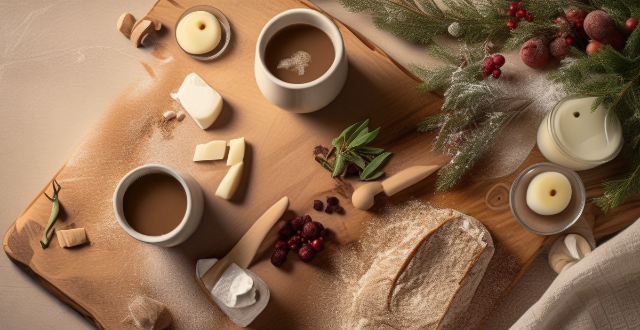
How can I make my Thanksgiving meal more festive and flavorful ?
To make your Thanksgiving meal more festive and flavorful, consider planning ahead, incorporating seasonal ingredients, dressing up your table, experimenting with flavors, offering a variety of desserts, creating a cocktail bar, providing entertainment, and remembering traditions.
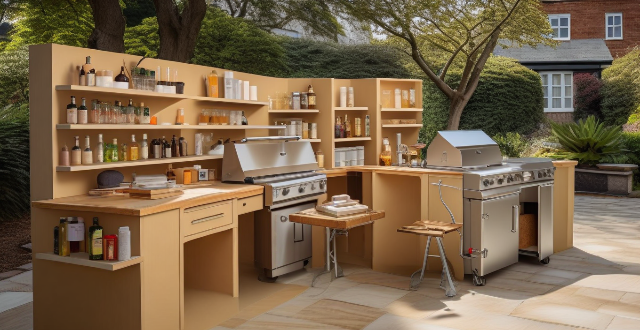
What are the most common mistakes beginner bartenders make ?
The most common mistakes beginner bartenders make include incorrect measurement of ingredients, not knowing basic cocktail techniques, poor glassware choices, inconsistent drink quality, slow service, lack of knowledge about spirits and mixers, weak customer interaction, and neglecting cleanliness and organization. To avoid these errors, it's important to use measuring tools, learn basic techniques, familiarize yourself with different glassware, stick to recipes, practice speed racking, taste and study spirits and mixers, work on communication skills, and maintain a clean and organized workspace.

How can I make my New Year's Eve party more memorable and unique ?
To make your New Year's Eve party stand out, consider unique themes, interactive installations, countdown kits, entertainment options, special food and drinks, and memorable favors. These elements will help create a fun and unforgettable experience for you and your guests.

How can I make drinks look more appealing with garnishes ?
Garnishing drinks is an art form that can elevate the visual appeal of your beverages. It not only enhances the aesthetic but also adds flavor and aroma to your drink. In this guide, we will explore various techniques and ideas to make your drinks look more appealing with garnishes. Importance of Garnishes: Garnishes add visual appeal, enhance flavor and aroma, and create theme and ambiance. Garnish Ideas: Fruit garnishes like slices and wedges, herb garnishes like sprigs and leafy toppers, spice garnishes like cinnamon sticks and star anise, edible flowers such as pansy or viola, and miscellaneous garnishes like cocktail picks and salt rims. Techniques for Applying Garnishes: Rim treatments like wet rims and layered effects, floating garnishes like fruit slices and edible flowers, and skewered garnishes like combination skewers and visual balance. By incorporating various types of garnishes and employing different techniques, you can significantly enhance the visual appeal of your drinks. Remember to consider factors such as color, texture, and flavor when selecting garnishes to create a cohesive and attractive presentation. With these tips, you'll be able to elevate any beverage from ordinary to extraordinary in no time!

How can I prepare a quick and tasty soup ?
In this text, the author provides a simple and quick recipe for preparing a tasty soup at home. They detail the ingredients needed, including olive oil, onion, garlic, carrots, celery, zucchini, vegetable broth, white beans, spinach, salt, pepper, and fresh herbs for garnish. The instructions are broken down into six steps: sautéing the vegetables, adding broth and beans, simmering, adding spinach, seasoning, and garnishing before serving. The author also offers tips for variations, adding protein, and spicing up the soup. Overall, the text emphasizes the versatility and nutritional value of soups while providing a straightforward recipe for a delicious homemade option.
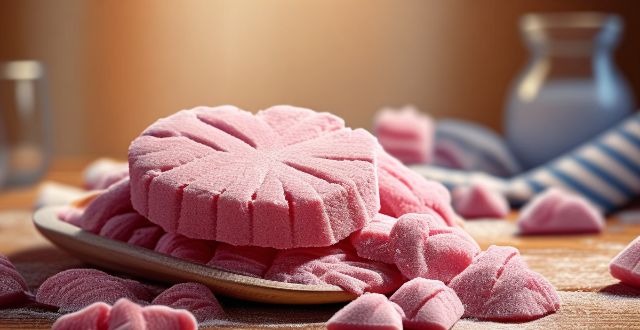
What makes macarons a quintessential French sweet treat ?
Macarons are a quintessential French sweet treat due to their origins, precise recipe requirements, variety, elegance, and cultural significance. They were perfected by the French in the mid-19th century and have become a staple in French patisseries. Despite the simplicity of the ingredients, making macarons requires precision and skill, which is emblematic of French culinary traditions. Macarons come in a wide range of colors and flavors, allowing for creativity and customization. Their small size and elegant appearance make them perfect for an afternoon tea or a light dessert. In France, baking is considered an art form, and the craft of making macarons is no exception. They are often given as gifts during special occasions, reflecting the French tradition of giving thoughtful, beautiful presents. Overall, macarons are not just a sweet treat but a representation of the beauty and refinement associated with French cuisine.

What are the must-try foods and drinks in island destinations ?
When traveling to island destinations, it's essential to try the local cuisine and beverages. Here are some must-try foods and drinks in popular island destinations: In Hawaii, you can enjoy a poke bowl made with diced raw fish served over rice and topped with various vegetables and sauces. Shaved ice is a refreshing treat that can be found all over the islands. A Mai Tai is a classic cocktail made with rum, lime juice, orgeat syrup, and curaçao. In the Caribbean, jerk chicken is a spicy grilled chicken dish that originated in Jamaica. Rum punch is a popular drink made with rum, fruit juices, and spices. Conch fritters are a Bahamian specialty made from chopped conch meat mixed with flour, eggs, onions, and spices. In Bali, Indonesia, you can enjoy nasi goreng, an Indonesian fried rice dish often served as breakfast or lunch. Es campur is a refreshing dessert made with shaved ice, coconut milk, syrups, jellies, and various fruit toppings. Bintang beer is an Indonesian pilsner beer widely available throughout Bali.